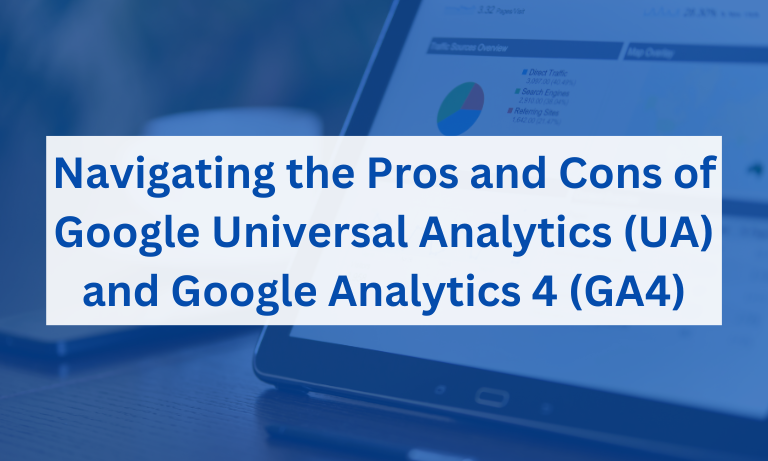In the ever-evolving landscape of digital analytics, businesses are faced with crucial decisions regarding the tools they use to gather insights into user behavior. Google has been a pioneer in this realm, offering both Google Universal Analytics (UA) and the more recent Google Analytics 4 (GA4). Each comes with its own set of advantages and drawbacks, and making an informed choice is paramount. Let’s delve into the pros and cons of both UA and GA4.
Familiarity and Stability: UA has been a staple for many businesses, providing a stable and familiar platform for tracking website and app analytics.
Mature Ecosystem: With an extensive range of plugins, integrations, and community support, UA boasts a mature ecosystem that caters to diverse business needs.
Robust Reporting: UA offers comprehensive reporting tools, making it easier for businesses to extract valuable insights and make data-driven decisions.
Cons of Google Universal Analytics (UA):
Limited Event Tracking: UA’s event tracking capabilities are somewhat constrained, making it challenging to capture detailed user interactions.
Session-Based Model: The session-based approach may not accurately represent the complex user journeys prevalent in today’s digital landscape.
Limited User-Centric Focus: UA tends to focus more on sessions than individual user behavior, potentially missing out on valuable user-centric insights.
Pros of Google Analytics 4 (GA4):
Enhanced User-Centric Model: GA4 shifts its focus from sessions to users, providing a more holistic view of individual user interactions across various platforms.
Advanced Event Tracking: GA4 excels in event tracking, allowing businesses to capture a broader range of user interactions and behaviors.
Machine Learning Integration: GA4 integrates machine learning models, providing predictive metrics and insights for better decision-making.
Cons of Google Analytics 4 (GA4):
Learning Curve: GA4 introduces a learning curve for users familiar with UA, requiring time and effort to adapt to the new interface and features.
Limited Third-Party Integrations: As a relatively new platform, GA4 may have fewer third-party integrations compared to the more established UA.
Transition Challenges: Migrating from UA to GA4 might pose challenges for businesses with existing setups, requiring careful planning and execution.
Conclusion:
Choosing between Google UA and GA4 depends on various factors, including the specific needs of your business, your familiarity with the platforms, and your appetite for adapting to newer technologies. Evaluating the pros and cons outlined above will help you make an informed decision that aligns with your analytics objectives.

